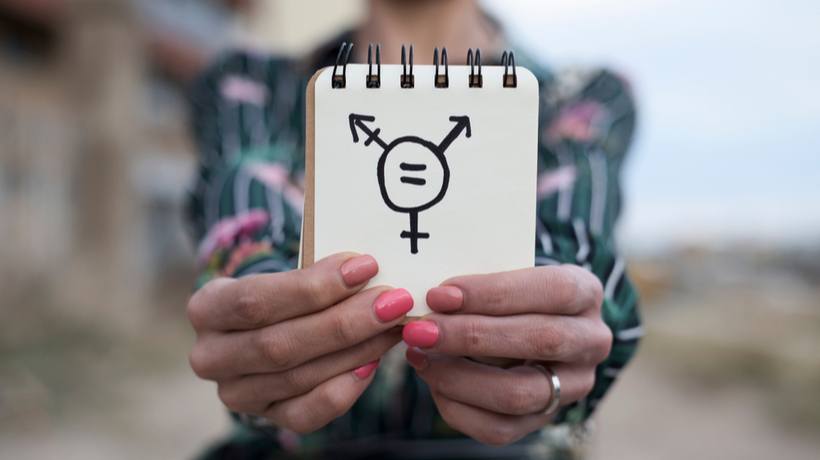5 Steps To Create LGBTQ Diversity Training
Whether you train for it or not, your employees are diverse. Making sure they feel valued and included is simply the right thing to do. Companies with powerful and effective diversity training have employees who are happier, more productive, and who tend to stick around [1]. Let's take a look at LGBTQ diversity training, and why it's important for your company.
What Are The Benefits Of Diversity Training?
There’s no real argument here for or against diversity training. The fact is that the U.S. and its workforce are more diverse than ever—racially, ethnically, linguistically, sexually, religiously and also in terms of gender, socio-economic status, age, physical and mental ability. Whether you train for it or not, your employees are diverse. Making sure they feel valued and included is simply the right thing to do.
Gender diversity training in the workplace and LGBTQ diversity training, in general, create a company climate with tremendous benefits.
Beyond feeling welcomed at work, here are just a few (research-based) benefits of LGBTQ diversity training and diversity training as a whole:
- Employees are more engaged in diverse, inclusive workplaces [2]
- Gender diverse workplaces outperform their competitors [3]
- Diverse workplaces are better at problem-solving
- Diverse teams outperform individual decision-makers 87% of the time [4]
And in the C-suite? Executive teams with more diversity made more money for their companies (and, by extension, themselves). Diverse teams outperform individual decision-makers 87% of the time [5].
Why Is LGBTQ Diversity Training So Important?
LGBTQ diversity training (and gender diversity training in the workplace in general) may be new concepts for your HR team, so it’s important to understand what these terms mean before diving in. The Human Rights Campaign's glossary of key terms is a great place to start.
For all kinds of diversity training and LGBTQ sensitivity training specifically, “inclusion” refers to the idea that all individuals in a workplace should be treated respectfully and fairly and given equal and encouraged access to resources and opportunities. Inclusion recognizes that the diversity of employees ensures a company’s success—not impede it.
When it comes to LGBTQ employees, inclusion considers factors that many heterosexual or cisgender people take for granted. It encourages inclusion for those across the wide spectrum of sexualities and gender identities.
For example, some people are born as a biological gender that does not match their gender identity or they may be non-binary. Non-binary employees may use different pronouns (e.g. they instead of he or she) [6]. Denying them the right to do so in the workplace essentially denies their rights as a person. Instead, inclusion respects every employee and encourages meaningful training and conversations about sometimes complex topics.
This is important because employees who experience harassment due to their sexuality or gender identity or feel like they need to hide who they are at work, experience higher levels of stress that result in missed work and higher levels of anxiety and other health issues [7].
While outright racism, homophobia, and sexism may have been banished from most workplaces, truly inclusive workplaces go beyond that to recognize and celebrate the differences of all employees.
How To Create Your LGBTQ Diversity Training Program
LGBTQ diversity in the workplace is increasing as more companies recognize the value of creating spaces that welcome a full variety of people. It can be challenging to create truly inclusive diversity training, but here are 5 actionable, first steps to start with.
1. Gather Appropriate Resources
If your training manual is more than a few years old, it's time to gather new resources. GLAAD is a great organization with a variety of resources to help your training designers better understand the issues that LGBTQ employees might face.
The Human Rights Campaign, also, has excellent resources for LGBTQ diversity training.
2. Look At All Company Policies
The most inclusive companies consider everything from gender-neutral dress codes and bathrooms to family sick leave policies to choosing insurance providers that support LGBTQ-specific medical care (including the costs of gender transitioning).
As part of your training needs assessment, take a look at places that actively exclude (or exclude by omission) LGBTQ employees, and plan to make adjustments.
3. Involve LGBTQ Employees
Remember those shots of panels of men making decisions about women’s health? Don’t be that company. How can you make decisions, training resources, and policies about something you don’t truly understand? Engage with the LGBTQ employees in your company and meaningfully involve them in the decision-making process.
Pro-tip: Not every employee will want to be involved, for a variety of reasons. Open the opportunity and, then, allow each employee to decide for themselves. Also, ensure employees receive appropriate compensation and/or time to work on these initiatives.
4. Focus On Genuine Inclusion
Inclusion actively seeks out diverse opinions, beliefs, and ways of working. This goes beyond superficial lip service and requires more thoughtful planning (and practice).
Genuine inclusion also confronts unconscious bias that creates division among people who are unfamiliar with each other. Give employees opportunities to get to know each other and work together in ways that promote deeper understanding.
5. Deliver Training Effectively
Company-wide changes to benefit packages, dress codes, employee protections against discrimination and harassment, gender-neutral language, and other policies that support LGBTQ employees can be delivered via microlearning as they are updated.
For remote workplaces, mobile learning (mLearning) is another way to deliver crucial information when and where your employees need it.
References:
[1] Tech Leavers Study (https://www.kaporcenter.org/wp-content/uploads/2017/08/TechLeavers2017.pdf)
[2] Waiter, is that inclusion in my soup? A new recipe to improve business performance (https://www2.deloitte.com/content/dam/Deloitte/au/Documents/human-capital/deloitte-au-hc-diversity-inclusion-soup-0513.pdf)
[4] Diversity drives better decisions
[5] Is there a payoff from top-team diversity?
[6] If someone wants to be called 'they' and not 'he' or 'she', why say no?
[7] The Business Impact of LGBT-Supportive Workplace Policies (http://williamsinstitute.law.ucla.edu/wp-content/uploads/Business-Impact-LGBT-Policies-Full-Report-May-2013.pdf)









